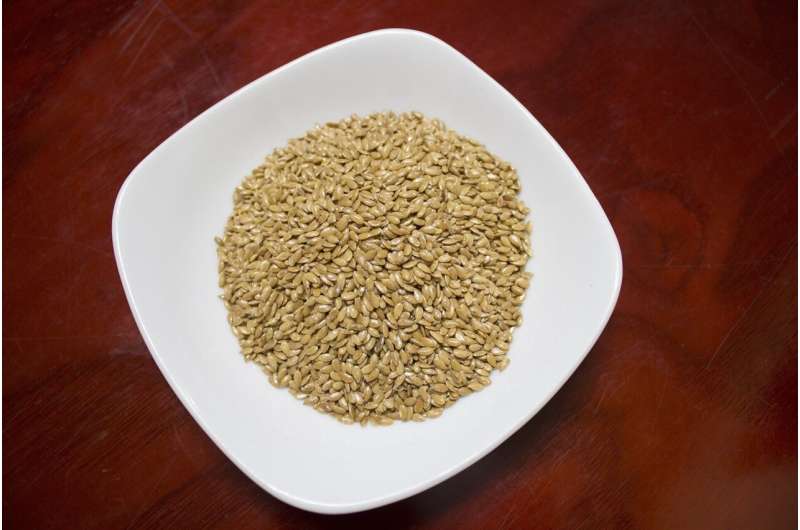This article has been reviewed according to Science X's editorial process and policies. Editors have highlighted the following attributes while ensuring the content's credibility:
fact-checked
trusted source
proofread
Flaxseed allergy appearing more frequently—present in foods and other substances

Flaxseed is an increasingly popular ingredient in baked goods and other food products due to its perceived health benefits. It is even used as a substitute for egg in some recipes.
Two new medically challenging cases being presented the American College of Allergy, Asthma and Immunology (ACAAI) Annual Scientific Meeting in Anaheim, Calif. show that flaxseed can cause allergic reaction—both after being ingested and also after touching the skin.
"Flaxseed allergy has been reported in adults, but not as often in children," says Alana Xavier De Almeida, MD, ACAAI member and lead author of the paper, titled "IgE Mediated Flaxseed Allergy in Non-Atopic Toddler Polysensitized to Tree Nuts but Tolerating Other Seeds."
Dr. Xavier De Almeida is in training as an allergist. "We saw an 18-month-old patient with a rash throughout his face and chest 20 minutes after eating a packet of oatmeal with premixed flaxseed," she says.
"This was the first time the patient had eaten flaxseed, and the event self-resolved within four hours. A skin prick test was performed revealing positive results for various nuts and seeds, including flaxseed. Evaluation also included measurement of serum IgE levels. Based on the history and test results, a diagnosis of an IgE mediated reaction to flaxseed was made. A direct oral flaxseed challenge test was offered to confirm allergy but was never performed due to parents' preference not to proceed."
The second medically challenging case, titled, "Contact dermatitis of the hands caused by flaxseed in artist's paint," involved a patient who was seen for recurrent rashes on her hands. The patient was an artist painting with oil paints. A history was obtained regarding items she used while painting including paint, charcoal, solutions to clean brushes and more. Review of items used showed that her oil paints contained Linseed/flaxseed-based oil as do many of the oil paints artists use.
"Her hand dermatitis was severe and disrupted her painting," said allergist Richard Harris, MD, ACAAI member and lead author of the paper. "She exclusively used oils to paint. We asked her to bring all items and products she used while working on her art pieces. Patch testing was done using test wells taped on the back for 48 hours. Flaxseed reacted significantly at her patch test site at 48 and 72 hours.
"Both flaxseed oil and linseed oil are derived from the dark brown seeds of the plant Linum Usitatissimum. Linseed oil is used in oil paint since it speeds up drying time and reduces visibility of brush strokes. In this case, it caused severe contact dermatitis, but it is also reported as an ingested allergen often seen in cereals and baked goods."
Both cases illustrate that flaxseed, used in both food products and art supplies, should be considered as a trigger for an allergic reaction.
More information: Abstract M328: IgE Mediated Flaxseed Allergy in Non-Atopic Toddler Polysensitized to Tree Nuts but Tolerating Other Seeds
Abstract M452: Contact dermatitis of the hands caused by flaxseed in artist's paint

















